
Resistance bands are arguably the most versatile pieces of exercise equipment you can own.
And when it comes to shoulder exercises, what better solution than a lightweight, portable, and easily accessible band that you can rig up anywhere in your home?
Here, we’ll outline what they are, why they’re amazing, and top it off with some of the best resistance band exercises for shoulders.
What Are Resistance Bands?
Resistance bands are large elastic bands that are used to provide resistance when training muscles and limbs. They are frequently used in physical therapy to aid rehabilitation and increase strength and mobility.
Instead of being large, heavy, cumbersome, and daunting (like most other gym equipment can be), resistance bands are extremely light and, just like an elastic band, are super easy to handle.
Like all pieces of gym equipment, resistance bands come in all shapes and sizes. Different lengths and tensions are better for certain muscle groups or exercises.
3 Reasons Why You Need Resistance Bands
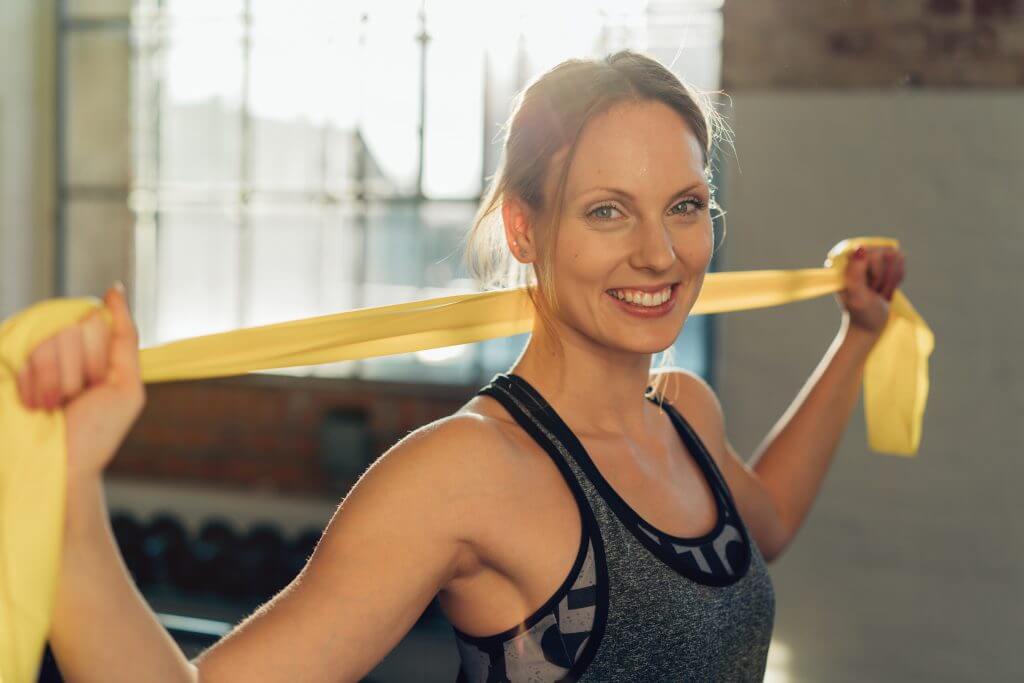
Compared to other exercise equipment, resistance bands have several advantages:
1. Rig Them Up Anywhere
Resistance bands are super flexible and easy to transport to the park, gym, or even in your bedroom.
2. Resistance Band Exercises Isolate And Target Joints
Compared to free weights, resistance bands are flexible and lightweight, and can target specific joints and muscles while fully resting others.
3. Unlimited Angles
Whether you’re using the bands on their own or securing them to objects, you’re able to achieve almost infinite angles while exercising.
Benefits Of Resistance Band Shoulder Exercises

The shoulders are one of the most complex joints in the body. It’s responsible for most of your upper body arm movements, from putting a seatbelt on to brushing your teeth. But being so complex also means it’s highly vulnerable to injury – especially during exercise.
That’s where resistance band workouts come in.
With the ability to change the tension to the ideal level and engage your shoulders from almost infinite angles from different surfaces at different heights, resistance band shoulder exercises are an easy, safe and effective alternative to other more strenuous weight lifting exercises. Whether you’re recovering from a rotator cuff injury, or hoping to improve your strength training, resistance band workouts can change the way you do shoulder exercises.
Which Resistance Bands Should I Get?
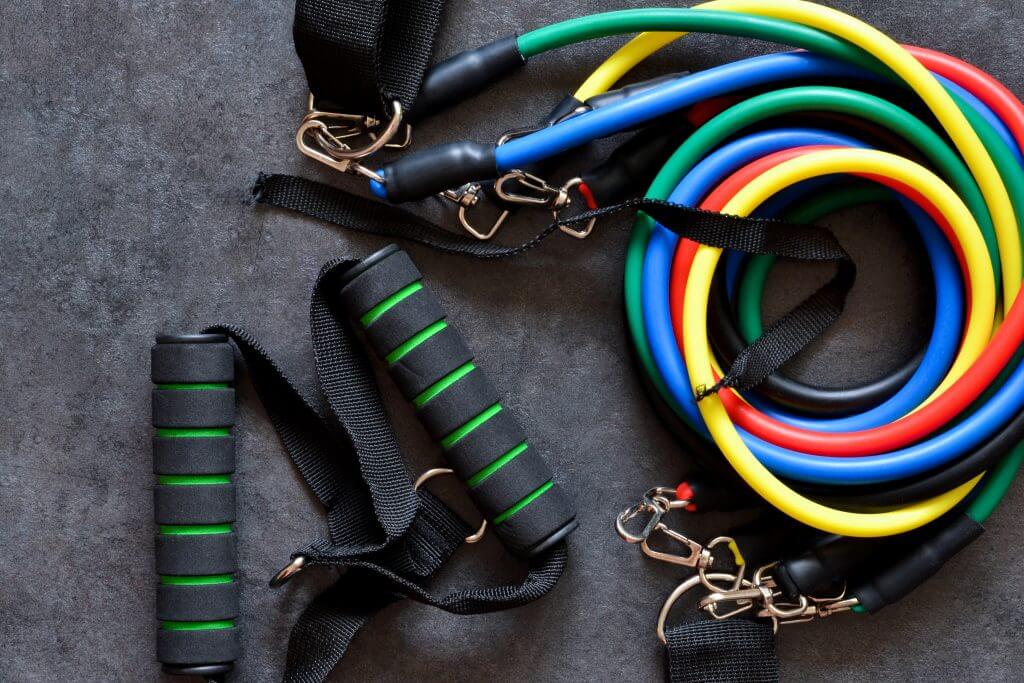
With various types, including loop bands, handled bands, and light therapy bands, deciding on which ones you need will depend on what exercises you plan on doing.
A combination of loop and handled bands are usually sufficient to get a majority of shoulder exercises done. If you’re unsure about which type of band is best for you, make sure you speak to your Perth physiotherapy specialist who can advise on the best choice.
Best Resistance Band Exercises For Shoulders
Now that you’re up to speed on why resistance band shoulder exercises are so helpful, let’s take a look at some exercises and routines.
1. Front Raise
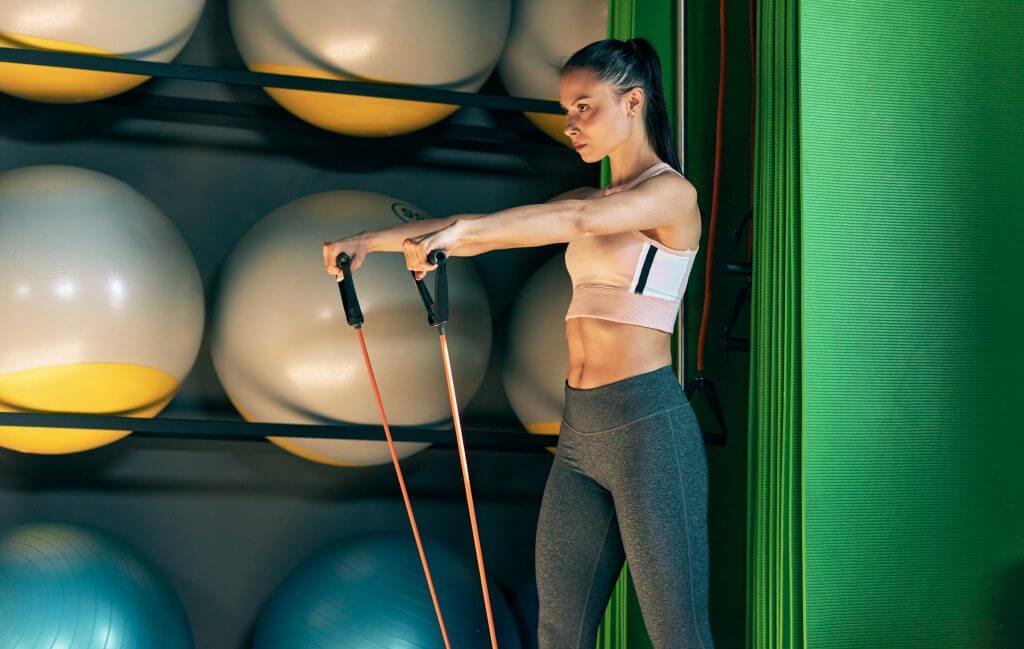
This straightforward exercise is the ideal exercise for warming up the shoulders, specifically the front and side deltoids, the serratus anterior muscle, and biceps. It also helps improve stability and mobility.
- Starting position: Place the band underneath both feet and hold the ends with either hand.
- Standing straight, legs knee width apart, and with knees slightly bent, slowly raise the bands at the same time up to shoulder height.
- If you’re finding it too easy you can increase the tension by standing on ‘more’ of the band, alternatively, if you feel up to it, try raising the bands higher.
- Make sure to keep both hands in sync, and don’t use any swinging momentum to raise up the bands; keep it controlled, with your core engaged.
2. Single-Arm Side Raise
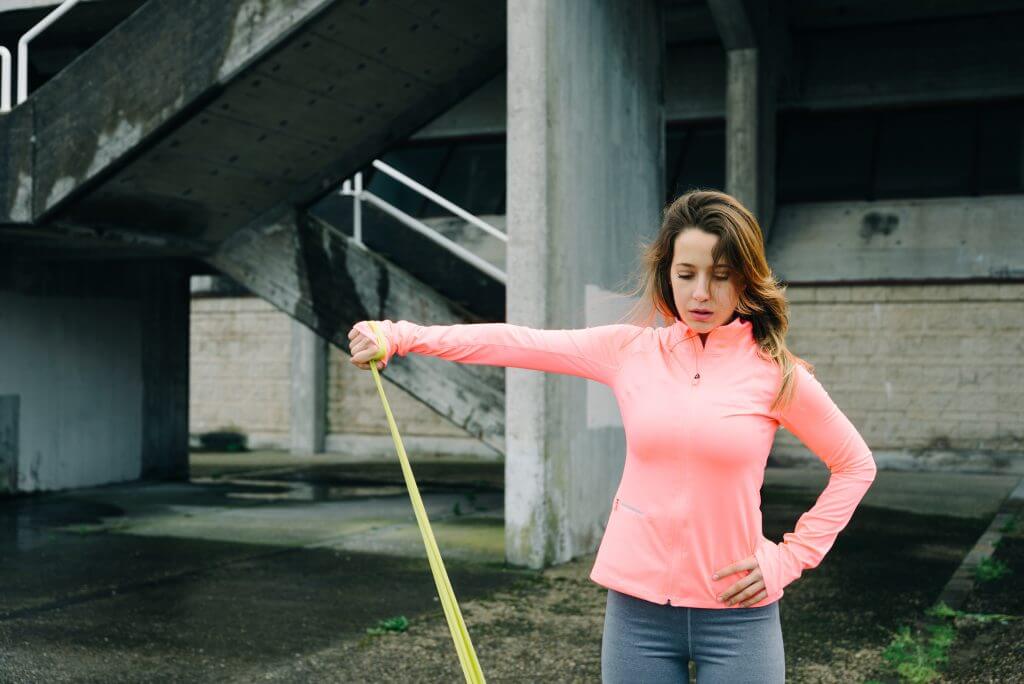
This focused exercise works the medial deltoid, and it’s recommended to use a lower tension or lighter band than the frontal raise. Side raises are ideal for improving the upper body and shoulder mobility, while also engaging the core and upper back muscles.
- Holding one end in your hand, and using the opposite foot to stand on the band, adjust until the tension is where you want it.
- With your palm facing inwards, and elbow slightly bent, raise your arm up to shoulder height.
- Pause, then control your arm back down to your side.
3. Pull-Apart
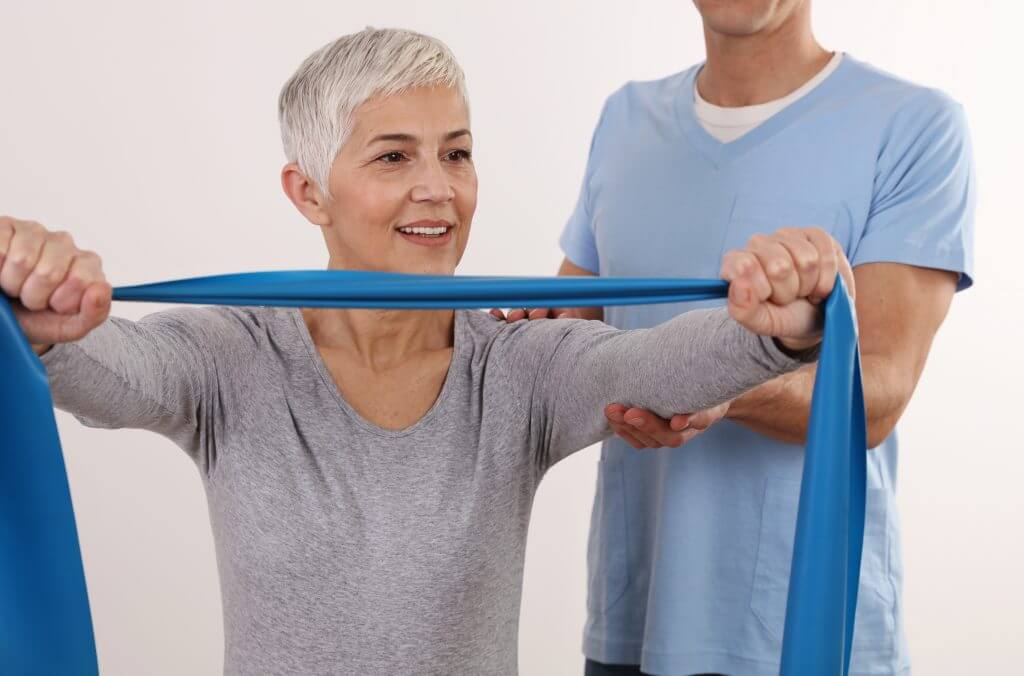
The beauty of resistance bands is that you can use exactly the same thing to work completely different parts of the same muscle. The pull-apart targets the back of the shoulder – improving stability, and helping anyone dealing with poor posture.
- Grasp the band so you’re holding equal amounts between both hands – the more band between your hands the easier it gets.
- Keeping your back straight and elbows slightly bent, pull the band back with both arms so your shoulder blades come together behind you.
- Pause so you feel your shoulders and chest engaged – then control your release back to the starting point and repeat.
4. External Rotation

Anyone working from home or at the office will benefit from this exercise – not only does it free up your shoulder mobility, but also helps with maintaining good posture.
- Fasten one end of your band to an object at belly-button height.
- Stand with feet shoulder width apart, at right angles to the band, and grab the other end using your outside arm.
- Keep your elbow anchored by your waist, and use it as your turning point as you rotate your forearm out.
- Swap arms and repeat with opposite sides.
5. Internal Rotation

This exercise is basically the opposite of the external rotation. Similar to the above, start with the band fastened at belly-button height.
Instead of stating your forearm outward, use your inner arm this time to draw the band towards you.
Get Started With Resistance Bands. Book In With Integrity Physio Today.
Getting started with resistance bands
At Integrity Physio, we know that tailored solutions are critical in overcoming complex issues. When it comes to injuries affecting the shoulder joint, it’s more important than ever to take a cautious and balanced approach.
Our Perth physiotherapy team can devise personalised strategies using resistance band technology to improve shoulder health, kickstart rehabilitation, and get your mobility back.
Get personalised resistance band shoulder exercises: book an appointment with our team today.




